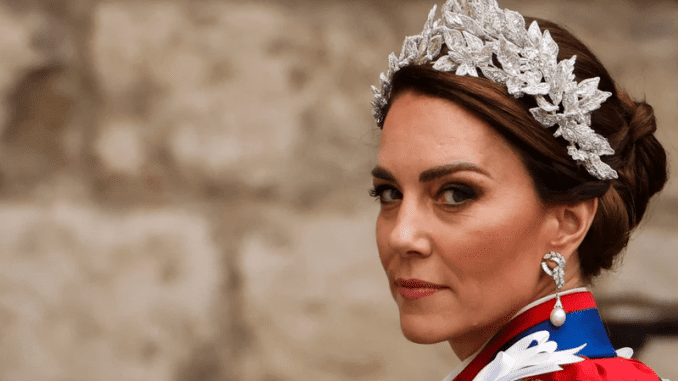
The gloomy news of Catherine, Princess of Wales’ cancer diagnosis has not stopped the seemingly constant churn of conspiracy theories.
The announcement that Britain’s Catherine, Princess of Wales, has cancer provoked a fast backlash over a stream of lurid social media conjecture regarding her health, including by those positing she was secretly dead.
But the melancholy news has not stopped the seemingly constant churn of conspiracy ideas.
Kate Middleton, 42, experienced an outpouring of global compassion when her video message on Friday revealed she was receiving preventative chemotherapy, attempting to put a stop to a whirlwind of baseless accusations circulating over her monthslong hiatus from public life.
The modification of a royal photograph the palace supplied to the media, as well as the British monarchy’s culture of secrecy, had fed much of the online speculation.
But the proliferation of evidence-free theories on social media – including posts peppered with skull emojis claiming the princess was dead or in an induced coma – illustrates the new normal of information chaos in an age of artificial intelligence and misinformation that has warped public understanding of reality.
The speculation took a severe turn last week when the British police were called to check an alleged attempt to access her personal medical documents.
“Kate has effectively been bullied into this statement,” writer Helen Lewis stated in US magazine the Atlantic.
“The alternative – a wildfire of gossip and conspiracy theories – was worse.”
Britain’s Daily Mail tabloid also blasted back, asking: “How do all those vile online trolls feel now?”
If social media posts are to be believed, they are not too remorseful.
‘CRUEL GRIFTERS’
Many on X, formerly Twitter, and TikTok claimed Kate’s video message was an AI-enabled deepfake.
Some viewers shared slowed down versions of the video to bolster the unsubstantiated assertion that it was digitally edited, wondering why nothing in the backdrop — a leaf or blade of grass – moved.
Others studied her facial motions and pondered why a dimple, as seen in prior photographs, wasn’t evident.
“Sorry House of Windsor, Kate Middleton (and) legacy media – I’m still not buying what you’re selling,” stated one post on X.
“Actually not sorry – you’ve all read ‘The Little Boy That Cried Wolf’ right?”
And then there was misinformation about cancer itself, with messages incorrectly suggesting that the disease was not lethal while associating chemotherapy with “poison.”
And how could anti-vaccine campaigners be left behind?
Many of them went on the conspiracy bandwagon, baselessly tying Kate’s sickness to “turbo cancer,” a myth associated to Covid-19 vaccinations that has been consistently disproved.
“There is no evidence to support the ‘turbo cancer’ lie,” said Timothy Caulfield, a misinformation expert from the University of Alberta in Canada.
Conspiracy theorists “are cruel grifters marketing fear (and) misinformation,” he continued.
‘SEED OF DOUBT’
The rise of outlandish hypotheses illustrates how facts are increasingly under examination on a misinformation-filled internet landscape, an issue worsened by widespread skepticism of institutions and traditional media.
The same skepticism, academics believe, has poisoned online conversations about major subjects, including elections, environment and health care.
“People don’t trust what they are seeing and reading,” Karen Douglas, a professor of social psychology at the University of Kent, told AFP.
“Once a seed of doubt has been sown, and people lose trust, conspiracy theories are able to gain traction.”
The rumor mill around Kate intensified after she vanished from public life after attending a Christmas Day church service and underwent stomach surgery in January.
Conspiracy theories emerged after the princess admitted to manipulating a Mother’s Day family portrait, a move that forced news agencies including AFP to delete it.
Conspiracy theorists plunged down a new rabbit hole when a later video appeared showing Kate wandering in a market with her husband, baselessly saying that she had been replaced by a body double.
“When it comes to an institution as old and opaque as the royal family, public distrust creates an appetite for a lot of sleuthing,” Dannagal Young, from the University of Delaware, told AFP.
Social media hashtags regarding the princess developed such virality that many users began using them to promote unrelated postings about topics that generate far less momentum, like human rights atrocities in India and the Middle East.
What made the frenzy worse, academics argue, was a culture of royal secrecy and the obviously failed PR effort of the palace.
“To be honest, the palace could have nipped the situation in the bud much earlier,” Douglas remarked.
Leave a Reply